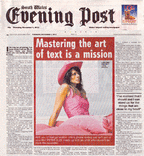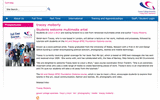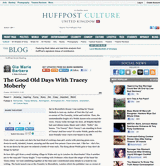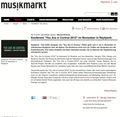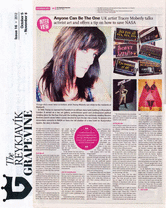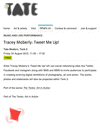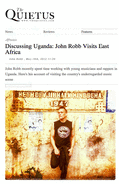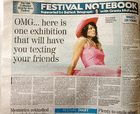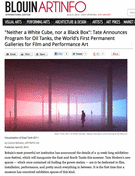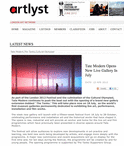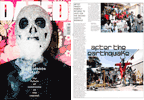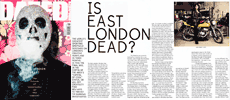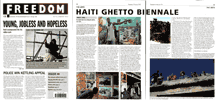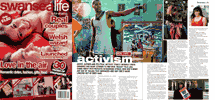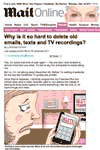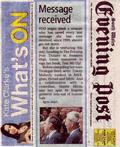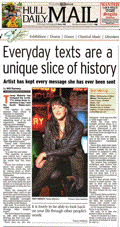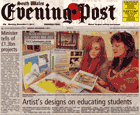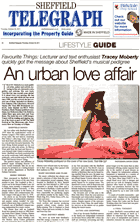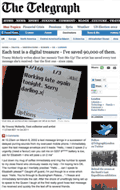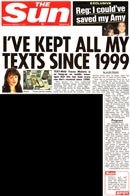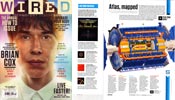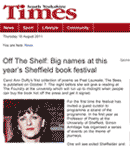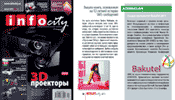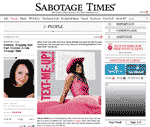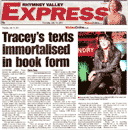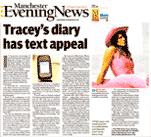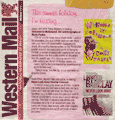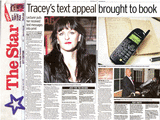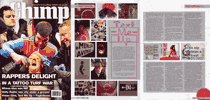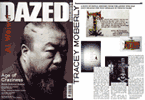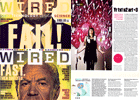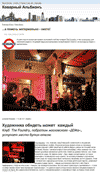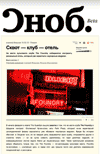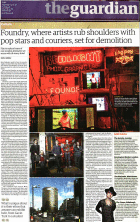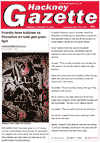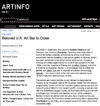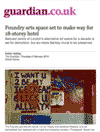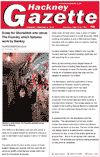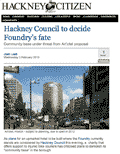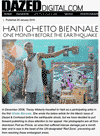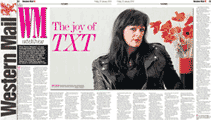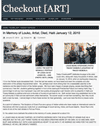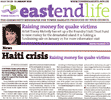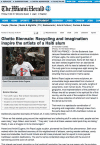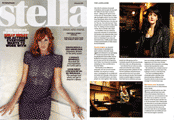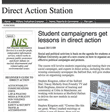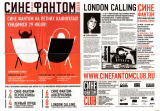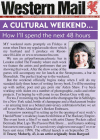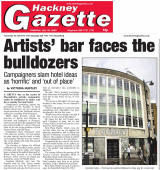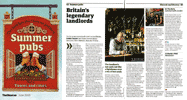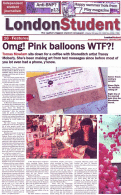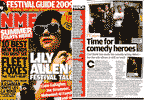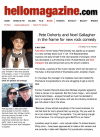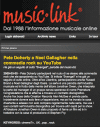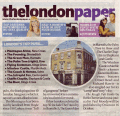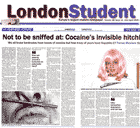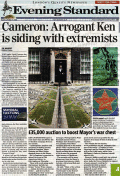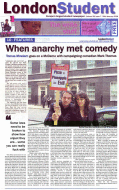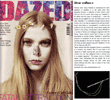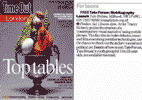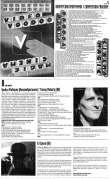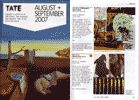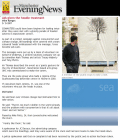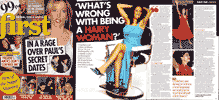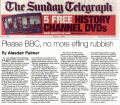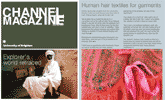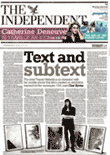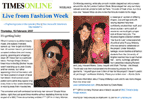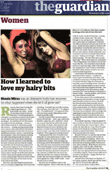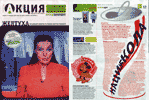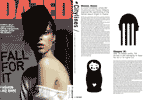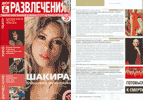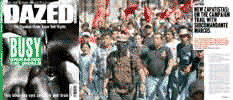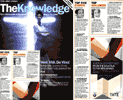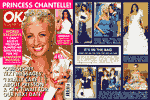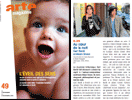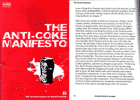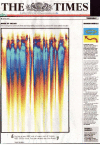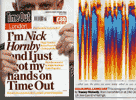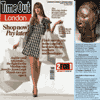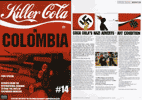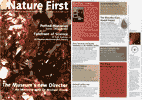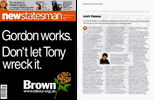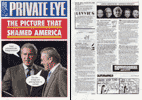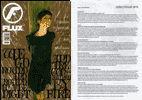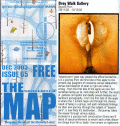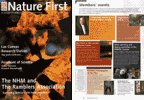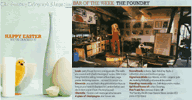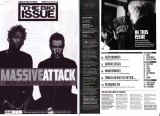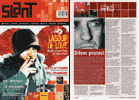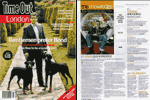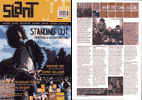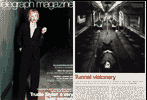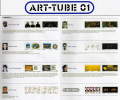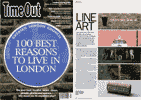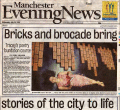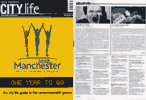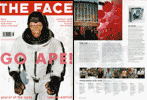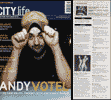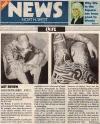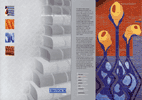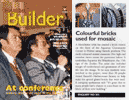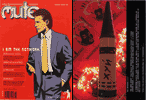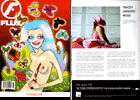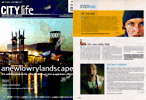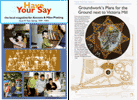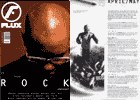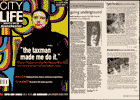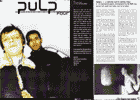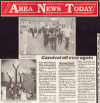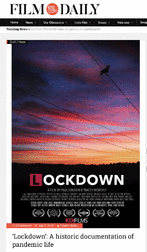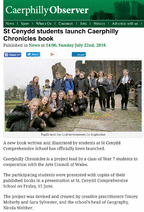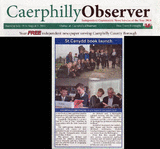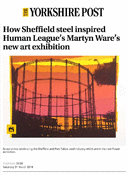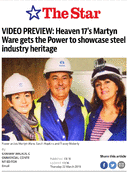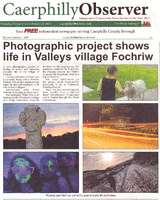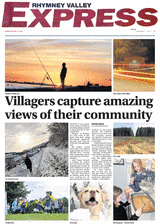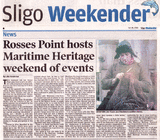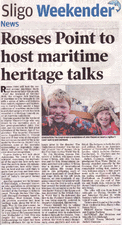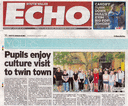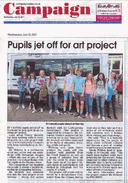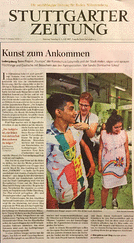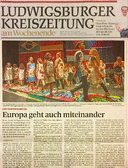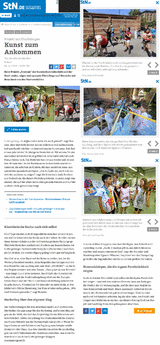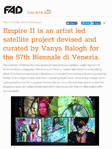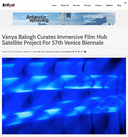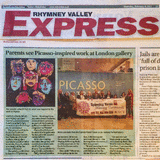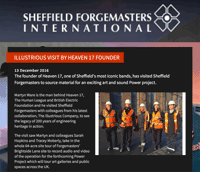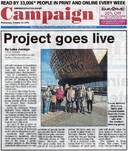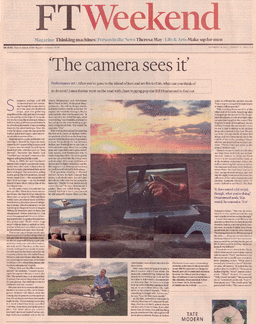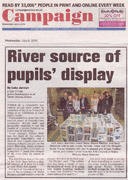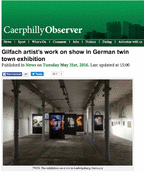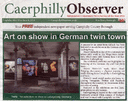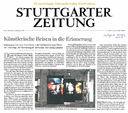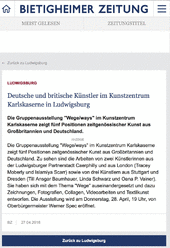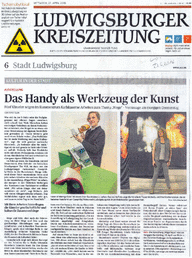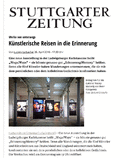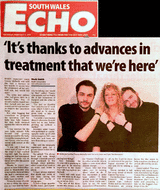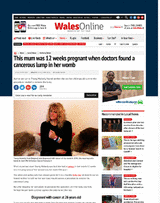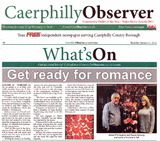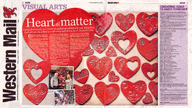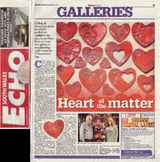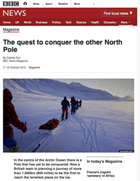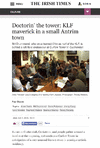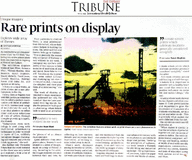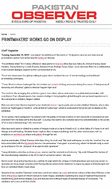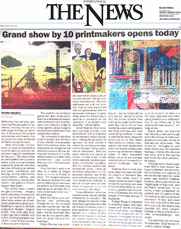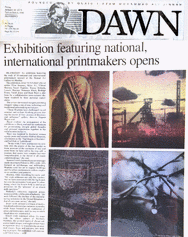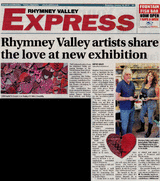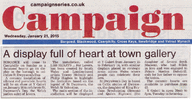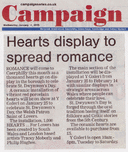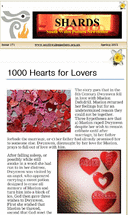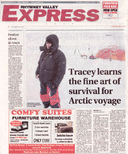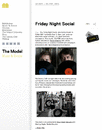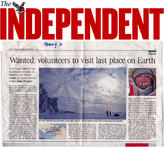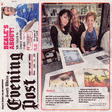[press]
[<<<] [>>>] click on image to enlarge

© tracey moberly 20121112.designweek.jpg
Design Week
[link] [pdf]
Tracey Moberly
Iceland consolidates recovery through creative industries
12 November 2012
The last time I visited Iceland’s You Are In Control conference in 2010 I found a country revelling in the news that its buoyant creative economy was dragging the country from near-collapse.
At the time I was shown government-commissioned research demonstrating that between 2005-2008, the number of people employed in Iceland’s creative industries rose from 13,000-17,000. And that in 2009, turnover in cultural and creative industries reached ISK81bn, outstripping agriculture, worth ISK25bn, and almost matching fisheries, which turned over ISK114bn the same year.
Now Iceland appears to be consolidating its recovery, although it still has a huge national debt to pay off no doubt.
This year’s YAIC, which had the title Creatives Into The Future, showed evidence of entrepreneurial vigour, design talent and start-ups based on great ideas, although the real story at YAIC was a global vision of collaboration as a means to solve global challenges.
Looking at the title Creatives into the Future an international delelgation drew on these ideas over three days.
Two projects in particular seemed to capture the spirit of cross-disciplinary collaboration. Illutron, a collaborative interactive art studio set-up aboard an old barge in Copenhagen’s south harbour, and in Iceland’s native Reykjavik, Toppstodin, once a power station and now a subsidised space for all manor of creatives.
Writer Andri Snaer Magnason was one of the key stakeholders in setting up Toppstodin.
His book Dreamland – a Self Help Manual for a Frightened Nation outlines the country’s recent history. Interestingly it was published in 2006 – before the economic crash - and drew attention to Government plans to attract overseas aluminium smelting companies which were to build plants on Icelandic rivers where they could draw on cheap energy. It is now seen as an almost prophetic text.
Highlighting the destructive force of these plans Magnason argues a sustainable alternative; an economy based on stimulating small creative businesses.
Presumably as an act of practicing what he preaches, Magnason commandeered the abandoned Toppstodin as a platform for such an endeavour – and I don’t think the symbolism of reclaiming a coal-fired power station, abandoned for some 25 years was lost on anybody.
Initially a statement of activism, the building now houses designers working on everything from underwear to an electric car designed to enter land-speed races.
Collaboration itself is also highlighted on the good ship Illutron. Co-founder Mads Hoybe calls the 450 tonne barge a ‘free thinking experimentation platform,’ where ‘curiosity not purpose’ adds value to projects, meaning ‘you don’t have to justify anything.’ Crucially he says ‘a value driven organisation enables organic flow.’
The business model: zero funding, but 10 per cent of any money made through projects goes back into the barge.
Tenants include a rocket engineer, designers, programmers, performers, electricians, and applying what Hoybe calls ‘collaboration through digital sketching’ teams are thrown together, helping each other with solo projects and commissions.
‘Out of art and into activism’ was one of Magnason’s take–home phrases, although notably another speaker, artist Tracey Moberly, seems to have made a successful career of both.
Moberly’s work centers around activism, mass-participation and exploring new technologies. This includes Coca-Cola’s Nazi Adverts Exhibition, a crowd-sourced exhibition drawing attention to the allegation that Coca Cola advertised in Nazi papers and financially assisted the regime. (Coca-Cola rejects any suggestion that it sympathized with the Nazi regime)
Moberly put-out a call to artists to interpret what these ads might have looked like.
The crowd-sourcing element is also a strong theme in her work, and most recently she has been preparing Family Old, Family New...Who Am I? for The Great British Art Debate, which will be held at the Tate Modern at the end of this month.
Part of a Family Matters series at the gallery, exploring identity, Britishness and representations of Britishness in Art, Moberly’s project ‘works ethnographically with social networking sites,’ she says.
Again through mass participation, Moberly has sourced images pooled from volunteers providing pictures stored on social networking sites, digitally uploaded images taken with mobile phones and cameras, video drops and old photos which have been scanned.
Marcos Zotes’ CCTV Creative Control
Meanwhile engagement through mass participation off-line is as relevant as ever. Marcos Zotes is an architect and director of Unstable, a design and research laboratory exploring social and political narratives in an urban context by projection mapping onto buildings.
Zotes plays with the form of structures, projecting images onto them, ‘to question the limitations of controlled public spaces.’
Surveillance, a reoccurring theme, is often directly highlighted as here on a New York water tower with this all-seeing and rather creepy moving eye, and in Reykjavík where a projector and a sensor activate a beam of light in the field of vision of a CCTV camera, drawing attention to the sensation that, ‘We are constantly being watched and we no longer care,’ says Zotes.
His most impressive stunt though is the reclamation of public space which fronts onto the staggeringly beautiful Hallgrímskirkja Church.
Another Reykjavik space, the square, which falls out of favour in cold winter months, became the focus of Zotes’ vision to activate the facade of the church, inspired by the natural conditions of Iceland.
Zotes led a mutidisciplinnary team to create this video-projection piece which includes some rather clever scaled up dance choreography by one Coco Carol, and a host of architects, visual artists, designers and musicians.
The spirit of participatory knowledge sharing was nicely demonstrated through Music Hack Day, a collaborative initiative with innovation and experimentation at its heart - which happens to be coming to London at the end of the week.
Co-organiser Johan Uhle invites programmers, designers and artists to prototype new software, hardware or instruments within 24 hours. Although the Infinate Gangnam Style software was a bit hard to stomach, this rudimentary, whimsical ukulele constructed from 3 iPhones was much more up our street.
Hot on their heels are some very young Icelandic programmers, mainly under the age of ten, who are the progeny of a new business and education programme, Skema Education, which mixes psychology, education and technology.
Headed up by Rakel Slovadottir it teaches code to children, many with perceived learning difficulties who she says thrive in a positive environment where results are almost immediate.
So much so that a peer-to-peer teaching method means an 11-year-old child with Aspergers is now teaching other kids.
In many ways the project which addressed the big themes of the weekend best was as edible as it was audible.
Designers and Farmers, an Icelandic Academy of The Arts Innovation project is linking up product designers, graphic designers, farmers, and food scientists, to make farming more profitable for struggling farmers, and to address waste.
If you leave your inhibitions at the door of farm/restaurant Fjallakaffi in Möðrudalur in Fjöll, you might enjoy this black pudding cake.
The cake idea came about as the farm is known for its meat but had not made use of its offal.
A team conspired to create the cake using root vegetables instead of fat, flavouring it with thyme, and moulding it as pictured.
More palatable maybe is Rabarbía caramel, an entirely new, designed and engineered rhubarb product, which draws on the childhood nostalgia of dipping a rhubarb stick into a glass of sugar.
The caramel is handmade by farmers, developed in collaboration with the IAA design team including food scientists, master bakers and designers, who appear to have nearly turned it back into a stick of rhubarb.
From Rejkjavik to rhubarb we have seen a country trying to design and innovate its way out of its own economic crisis with a call to arms for collaboration, yet with an eye on global issues.
